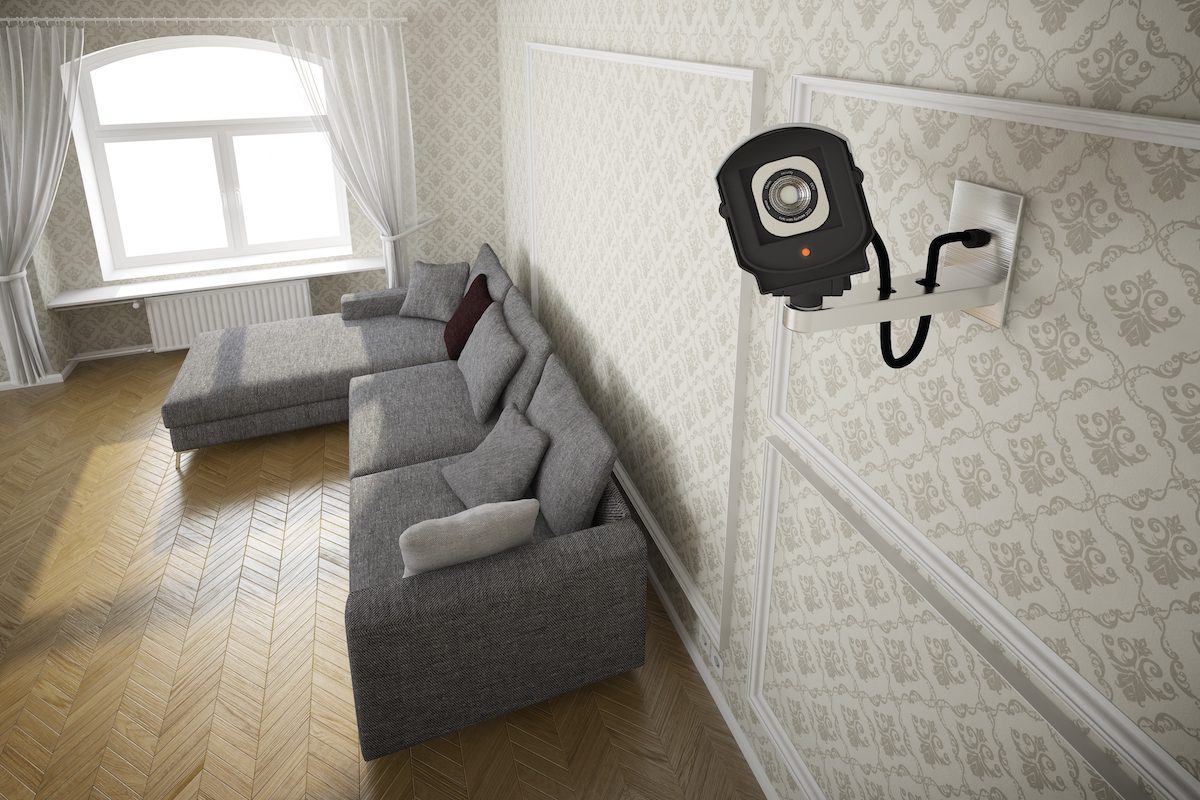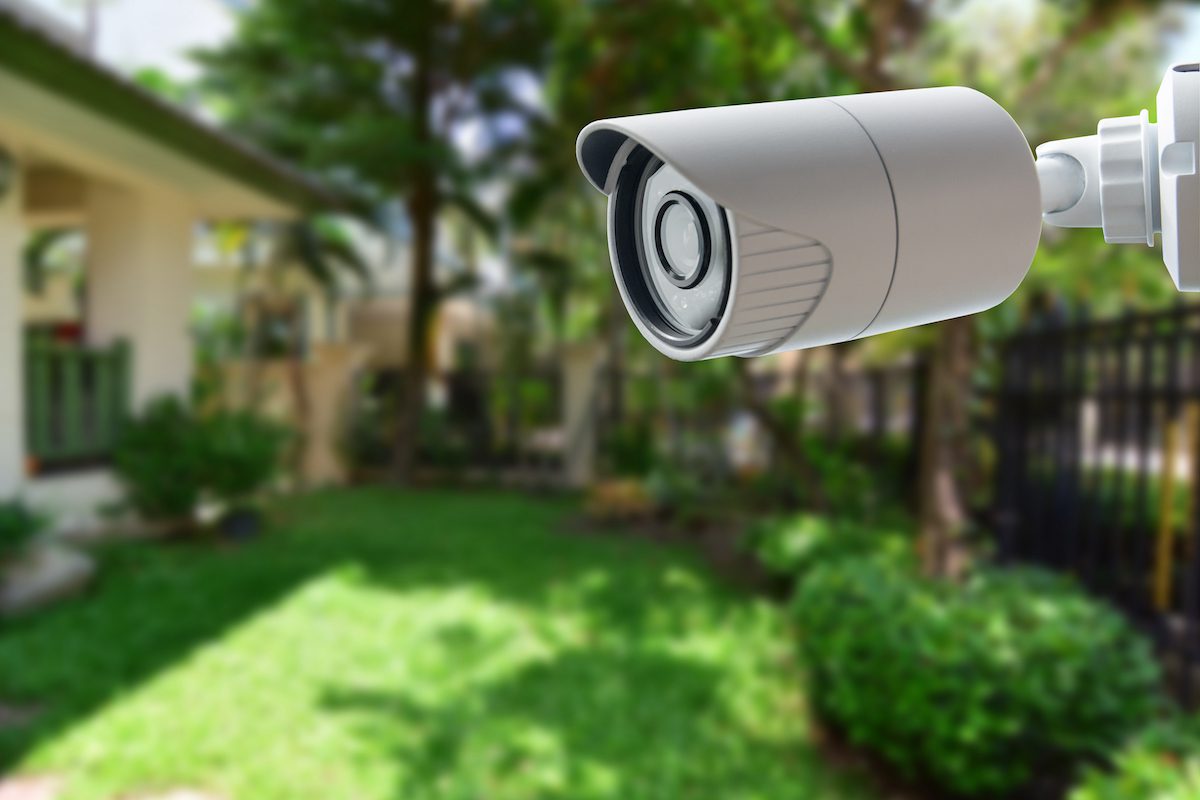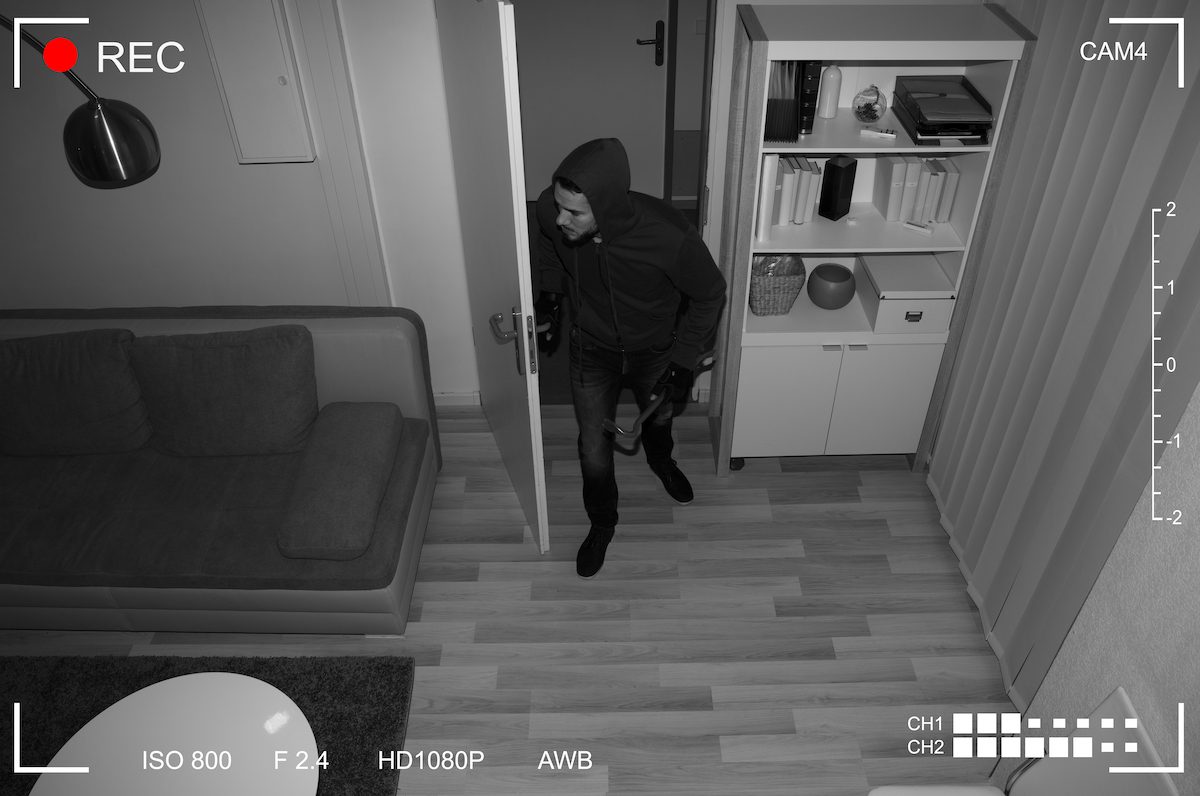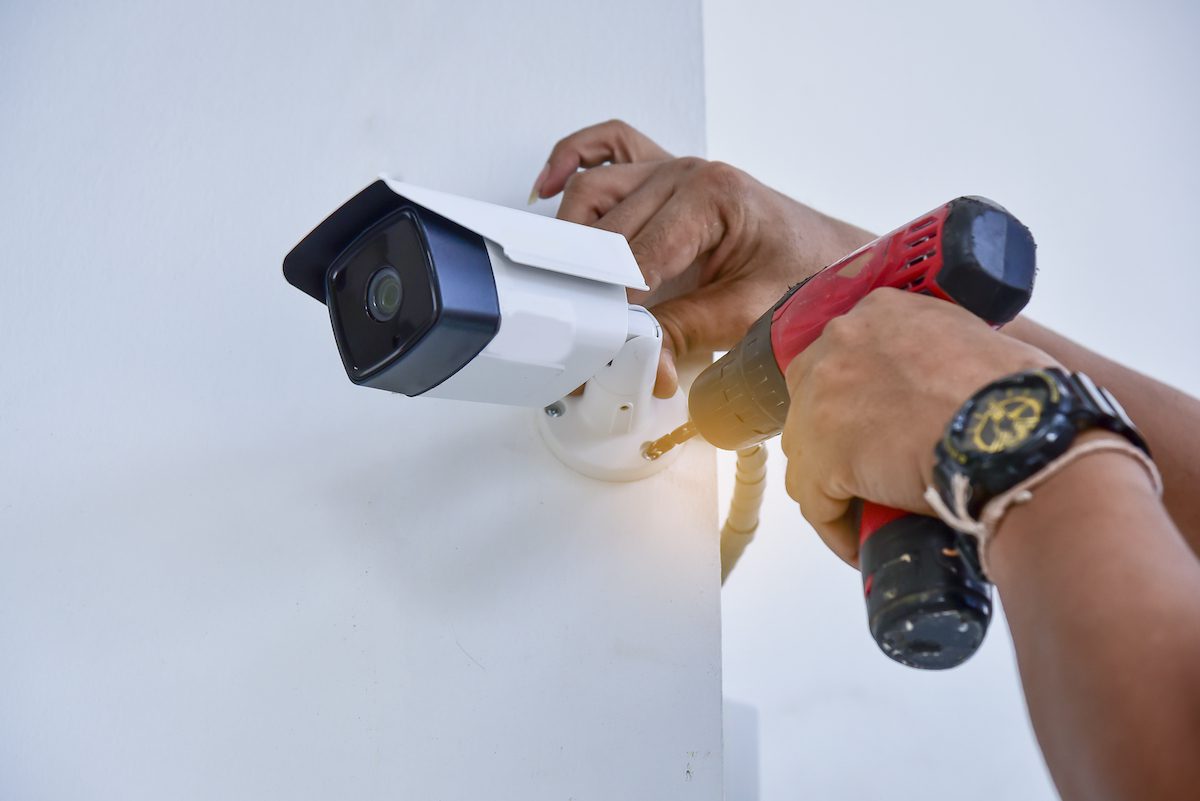Surveillance Cameras in a Rental House: What Landlords Can Legally Do

Most people expect a certain level of security when they move into a rental property. That can mean a surveillance camera or two and restricted entrance into an apartment building, or a full security system in a rented property. Either way, prospective tenants want to know the legal steps you're taking to discourage theft.
While it's not uncommon to see security cameras in parking lots and on the outside of homes, there's an expectation of privacy once you get inside. Both apartment security camera laws and those connected to rental homes exist. To play it safe and stay away from illegal activity, landlords need to know what's OK and what's not when it comes to surveillance cameras in a rental home. The last thing landlords want is legal trouble because of a tenant's rights violation or even worse, tenant harassment.

Can you put surveillance cameras in a rental home?
The keyword here is "in" when it comes to the decision to install a surveillance camera in a rental home. Outside the home is most likely fine. You want to prevent theft and property damage, and cameras can decrease the risk of break-ins, but this must happen from the outside. If you gain access through video to a tenant's unit or home when they expect privacy, you're heading in the direction of harassment and legal trouble.
Local privacy laws will dictate what you can and can't do when it comes to surveillance cameras. It's safe to assume, though, that installing cameras inside the private areas of your rental property is not legal. This means no cameras in living rooms and definitely none in bathrooms. It means no cameras anywhere where there's a reasonable expectation of privacy by anyone living in the house.
However, the outside and common areas are usually legal and fair game, even for landlords. Many will install cameras in strategic spots to check on those areas along the exterior of the home.
Can landlords install security cameras after move-in?
Yes, landlords can install outdoor security cameras after a tenant moves in. But a few conversations need to happen first. You must inform your renters of the additions, especially if the cameras capture sound. There are actual U.S. laws dealing with how you capture an audio recording. At least one member of the conversation needs to know about it and provide consent.
You should also tell tenants where the surveillance cameras are going up and what common areas they'll capture. Then, let them see the video, as well.

What rights do renters have after discovering landlord surveillance cameras?
If you install security cameras before a tenant moves in, and they aren't informed in advance, but discover them after, there's not much they can do. This is assuming the cameras are on the exterior of the home and aren't in any way capturing what's happening inside.
While you should have disclosed the information prior to them signing the lease, all they can really do is ask you to reposition the camera. For example, if they're uncomfortable with the angle. Some tenants may also ask landlords to amend the lease to add in information about the surveillance cameras to ensure complete transparency.
What rights do renters have after discovering hidden cameras?
If a tenant discovers any hidden CCTV cameras, or other security monitoring devices that are constantly recording, anywhere on the property, they can contact you and ask you to remove them. If you don't comply, they can involve the local police. These cameras are different since they aren't necessarily triggered by movement and can record continuously.
To stay on the right side of the law, it should never be perceived that a security camera is in place to spy on the people in your rental property. You should pick camera positions that only focus on protecting the building itself.

What's considered illegal surveillance?
If you're going to record people living in rental homes, you need renter consent. That means they have to know you have surveillance cameras up around the building. You also. have to tell them where they are.
The landlord should set up no cameras inside a home by the landlord. If your tenants want to use security cameras within the property to record themselves, they can, as long as the cameras don't capture footage of another person's home. It's also up to you whether to allow additional cameras at all. It's something to include in the lease.
Viewing the footage
With cameras only in public areas of the home, it's OK for both the landlord and the renters to have use of the footage and audio recording. But, you must make the people renting aware of this fact from the start. Dual access allows landlords to see the entire property when on-site repairs are made. They can also check-in when the property is vacant. The tenant could even ask you to keep an eye on the place if they're traveling.
For the tenant, the ability to watch the video cameras means more awareness of what's happening outside the property while they're living inside of it. It's what these security cameras are for in the first place.
Remember a smart doorbell is also a security camera
Not all surveillance has to happen from a camera alone, smart doorbells do double-duty. They're still a doorbell, but also a security camera. They let you “answer" the door even when you're not home. They also provide an added layer of protection for tenants. No one has to answer the front door without knowing who's on the other side.
Giving tenants approval to view a doorbell camera will most likely be another item they can add to the list of why they want to rent your property. And, although you, too, can see it since it's an exterior camera, you might want to back off from monitoring it regularly. You really don't need to see the general comings and goings of your tenants or when they get a package delivered.
It's even OK to have a conversation with your tenant and see if they'd prefer you not monitor that particular camera at all.

Benefits of installing security cameras
The primary benefit of installing outdoor security cameras is safety. Landlords want to protect their property even if they're not living on it, and monitoring outdoor areas can deter criminals. It's easy to understand why this added level of security is a positive for prospective renters. Most homeowners want or have this feature in their own homes, as well.
More visibility
Aside from protecting property from robberies and monitoring areas hard to see from inside the home, installing security cameras also gives the tenant more visibility into what's happening around it. They can see when a package gets dropped off on the porch or when food delivery is pulling up into the driveway. They can also keep tabs on who's coming and going without having to open the door and peer outside.
Child safety
For families, this added layer of security proves useful when younger children are staying home alone. Parents always tell their kids to never open the front door for anyone, but what if they have a friend coming over or a family member checking in? The security camera footage gives them the ability to know when it's safe to unlock the door.
Additional property protection
From the perspective of the property owners, having security cameras on your rental property allows you to monitor the home when it's empty. You can also supervise repairs and routine maintenance even if you aren't there in person.

Tips to install security cameras
You can decide to buy a la carte and deal with installing surveillance cameras in your rental home on your own. Or, you can hire a professional to come in and do a whole setup. If you're going the DIY route, remember to:
- Target areas to install cameras that naturally have low visibility by doing a walk around the property
- Pick spots on your rental property for cameras that are highly visible. You're not trying to hide your surveillance cameras. You want everyone, including criminals, to know they're there.
- Make sure cameras are not angled toward any windows or any places where people have a reasonable expectation of privacy
- Add a yard sign and display it prominently if your cameras connect to a bigger security system
- Test all cameras after installation, and make sure you understand how they all work. You'll also need to know how to add and remove others from having access as your tenants change.
If you have the option, buy security cameras with built-in lights. Most are motion-activated, which is a huge deterrent to anyone sneaking around the property in the dark. Also, make sure the cameras have night vision so you can still get a clear picture on the screen of what's going on, even in the dark.

Remember to reset
If you're going to have landlord surveillance cameras on the outside of your property, reset them once a tenant moves out. Every smart device you've given them access to needs to get transferred back over to you.
Once a new tenant moves in, you can get them all set up and situated.
This is a task that's easy to overlook. So, make sure you've got it set as a high priority on your final walk-through checklist.
Landlords need to keep their rental property safe
Installing surveillance cameras in your rental home because you're concerned about the safety of your property makes perfect sense. Finding ways to monitor the public areas of the home gives you a way to protect tenants and a way for them to protect themselves.
As the landlord, you're the person who can decide to install security cameras on any or all of your rental properties. The trick is to do it legally and transparently. You must stick to local laws and the parameters within the lease. Remember that all tenants have a reasonable expectation of privacy, and it's your job to not violate that.
